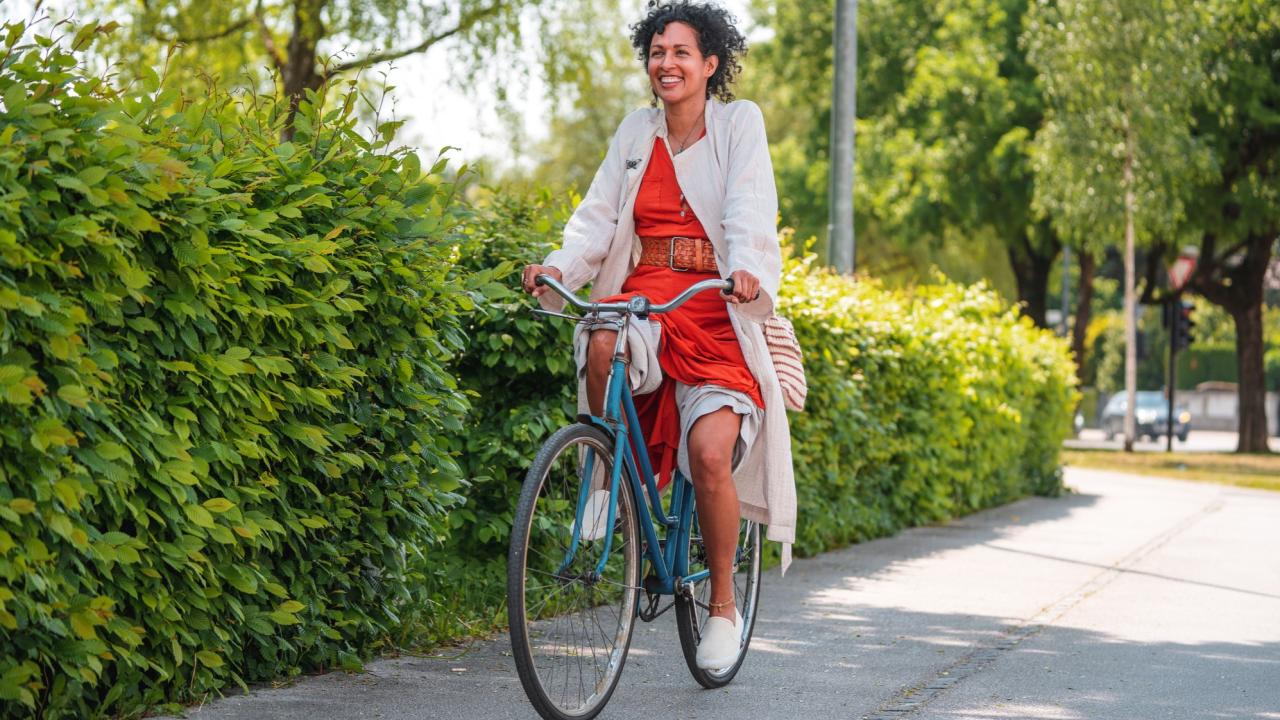Riding a bicycle is often seen as a childhood milestone, but the truth is, it’s a skill that can be learned—and enjoyed—at any age. Learning to bike later in life is not only possible but also incredibly rewarding as you enjoy the health and wellness benefits of riding. If you’ve never ridden a bike before, there’s no better time than UCLA Bike Month to get started!
Find the Right Fit
Before you hop on, make sure your bike fits you properly. You should be able to place your feet flat on the ground while seated, and comfortably reach the handlebars and brakes without straining. If you're buying from a local bike shop, they can help you find the right size and make any necessary adjustments. Don’t forget your helmet—it should sit level on your head, about two finger-widths above your eyebrows. When you gently shake your head, it should stay snug with only minimal movement.
Practice, Practice, Practice
If you’re getting on a bike for the first time, don’t start off riding in the street but in a flat, open space such as an empty parking lot. You’ll want to practice getting on and off the bike, making sure to lean it towards you as you hop on. When you’re off, get comfortable with the brakes by walking your bike and squeezing them to see how much pressure it takes to slow down, making sure to apply pressure evenly to both brakes.
Get on the bike again and practice coasting, where you’re stepping with your feet to move the bike forward without pedals, eventually to the point where you can pick up your feet and balance on the bike for a few seconds.
Once you can confidently coast and brake, you can start pedaling! Begin by sitting on the seat with one foot flat on the ground and the other on a pedal at the 2 o’clock position. If your bike has gears, make sure it’s in a low gear to make starting easier. Press down firmly on the raised pedal to move forward, then quickly bring your other foot up to the second pedal. Alternatively, you can start by scooting with one foot, like a scooter, to gain speed before placing both feet on the pedals.
Build Confidence and Keep Going
As you begin pedaling, remember that momentum is your friend—the faster you go (within reason), the easier it is to stay balanced. Practice riding in wide circles or figure eights to get used to turning and steering. Don’t worry about perfection—wobbles and stops are part of the learning process. As your confidence grows, gradually raise your seat so your legs have a slight bend at the bottom of each pedal stroke, which improves efficiency and comfort.
Celebrate the Ride
Learning to ride a bike as an adult is a powerful reminder that growth doesn’t stop with age. It’s a chance to reconnect with your sense of adventure, improve your health, and enjoy the outdoors in a whole new way. So whether you're riding for fun or fitness, take pride in every pedal stroke!






